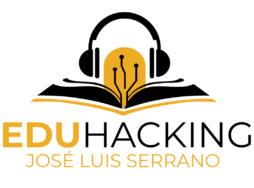Hi everyone
This is my first blog post in English, thanks to #rhizo14 and especially @mdvfunes ;-). Sorry for my mistakes in English, if you do not understand any ideas, don’t worry, it will be because of that 😀 However, you can read the remix of the post here (without mistakes). Many thanks Mariana :-).
Like I said in a preview post, I am doing an open course about rhizomatic learning… it is very exciting! If you want to know what happened in the first week, you can visit this post . Our challenge last week was to consider cheating as a lens through which to understand learning. You can find out the things to do (week1) here
During the week, I have been reading (and cheating :-)) about this idea, for example:
Now, I would like to share my thoughts about “cheating as learning” as a possible weapon for learning. Moreover, in this post I am going to try to explain my rhizomatic learning experiencie with my students at the university.
Cheating as a weapon to take apart the structures that I work in?
When I was in High School, I cheated on homework and tests, it was exciting because “the greatest pleasure in life is doing what people say you cannot do” (by Walter Baghet, thanks to my student of #esytic13). Why did I do it? I did not need to learn the information that I copied, and now, I think it is the same. I am not sure about the idea “cheating as learning” but, I think that cheating is a good way to break power structures and to think about the importance of learning. What is the point of our students doing a task or test when they can find the answer on the Internet in seconds? None. My premise is: the answers that can be copied, are not asked about. Maybe, “cheating does not mean taking somebody’s work and making it our own, cheating might mean not doing what I am supposed to do. More like breaking some rules to create or improve our work” (datenglish).
Why I am interested in learning about the rhizomatic teaching and learning?
And, why not? In the last post, I talked about this. The main reason is the abundance of information and connections there are in our age. I am worried because my students (University) do not know how to reflect on their own learning, and they have problems connecting with other interesting people outside the classroom. They are missing great opportunities for learning, why don’t we teach this? I want my students to be able to “choose their own self determined routes through the content, so context will change and new node and connections will be created in what will become a massive, dynamic, synthetic” (Steve Wheeler).
This is an attempt about rhizomatic activity, I think… 😉
Last month I tried to do rhizomes in my class. After this experience, I think that the community could design and develop the curriculum (in formal education too), but it is very complex due to the structured education system. Now, I would like to share the steps (summary) I followed:
1. Identify training needs. My students asked teachers, families, children and other people on twitter about social networks (a content of my course) and they reflected on their own needs.
2. Selecting the needs (results of step 1). My students selected the needs of community (teachers, families, other people, children, themselves…)
3. Design curriculum of an activity. My students designed their activities to learn.
4. Development of the activity in classroom.
5. Assessment. My students self-assessed all the work.
I needed six weeks of work. In conclusion, I think the main difficulties which my students found were in step number 3. It was chaos :-), they didn’t know effective strategies to negotiate what they would learn, the communication between students in this step was bad.
The opinion on this way to learn was good (in general), they emphasized the process more than the results.
My question is: maybe there are forums online with potential activity for rhizomic connections, but, how can we apply these ideas in formal education?
Many thanks!
* This post was modified on 25th January 2014. Thanks David, my English teacher 🙂





